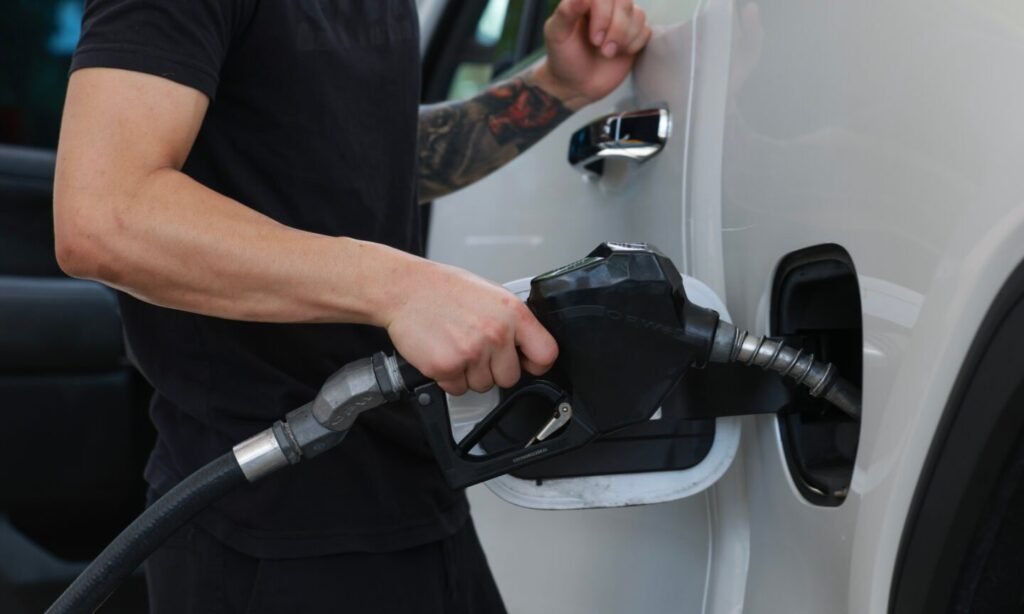It appears that the national average price of gas is on track to dip below $3 per gallon soon, a milestone not seen since May 2021. While this number may seem arbitrary, it holds significance as it signifies a return to pre-pandemic prices.
With the decreasing prices, drivers are gaining more purchasing power at the gas station. To illustrate, let’s assume you have $20 to spend on gas, and you’re paying the current national average for regular gas as of Oct. 28.
-
At the current U.S. average price of $3.13 per gallon, $20 would allow you to purchase approximately six gallons, filling about half a tank. (Most gas tanks hold between 12 and 15 gallons of fuel, according to JD Power.)
-
Comparatively, a year ago when gas prices averaged $3.50, $20 would have bought a little over 5.5 gallons.
-
In June 2022, during the peak of the national average at $5.02 per gallon, $20 would have only gotten you four gallons, about a third of a tank.
Gas prices vary significantly by state, with 20 states already paying less than $3 per gallon for regular gas while three states still have prices above $4 per gallon. Here’s what $20 would get you in the states with the highest and lowest gas prices:
-
Highest: California. 4.35 gallons at an average price of $4.60.
-
Lowest: Texas. 7.5 gallons at an average price of $2.67.
The following table provides a breakdown of how far $20 can take you based on your location.
Is $3 per gallon considered cheap now?
After enduring two years of high inflation, your perception of $3 gas (or the equivalent in your state) may be complex. The decreasing prices may offer some relief to your budget, but you might also find it underwhelming compared to what you consider “cheap gas.”
Perhaps $2 per gallon is the threshold you have in mind for better gas prices. This was the national average 20 years ago, and we briefly experienced it when gas prices plummeted at the start of the pandemic in 2020. However, this drop was short-lived and driven by a sudden decline in fuel demand.
While it’s true that back in 2004, with the same $20, you could have purchased four more gallons of gas than you can now, it’s important to consider inflation. Inflation not only affects prices but also wages.
When comparing prices over time, the key question is about affordability, according to Jeremy Horpedahl, an economics professor at the University of Central Arkansas. Assessing affordability involves comparing the price of a specific good to wages to determine if people can buy more or less of the product than in the past.
Assessing the affordability of gas
If you consider the expenditure on gas in terms of how long it takes you to earn that $20 now versus 20 years ago, you might be surprised by how affordable gas has remained.
According to data from the U.S. Bureau of Labor Statistics retrieved from the Federal Reserve Bank of St. Louis, the average worker earned $30.33 per hour in September 2024. This figure contrasts with $23.68 in September 2019 and $15.78 in September 2004 when gas prices were around $2 per gallon.
Based on the average hourly rate in September, the average worker now needs about 40 minutes to earn $20. With this $20, you can purchase a little over six gallons of gas at the current national average price. In comparison, it took 41 minutes of work in 2019 and 43 minutes in 2004 to buy the same amount of gas.
Therefore, despite the fluctuations of recent years, it seems that gas prices have remained relatively stable.
(Photo by Joe Raedle/Getty Images)

